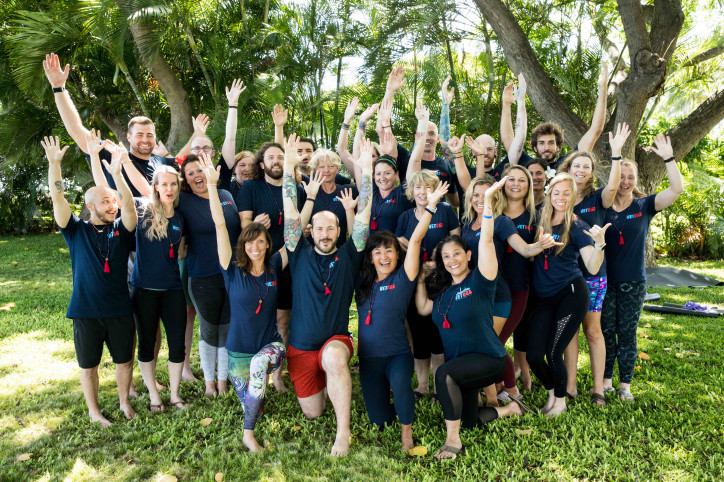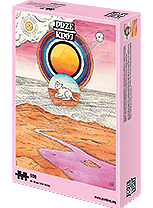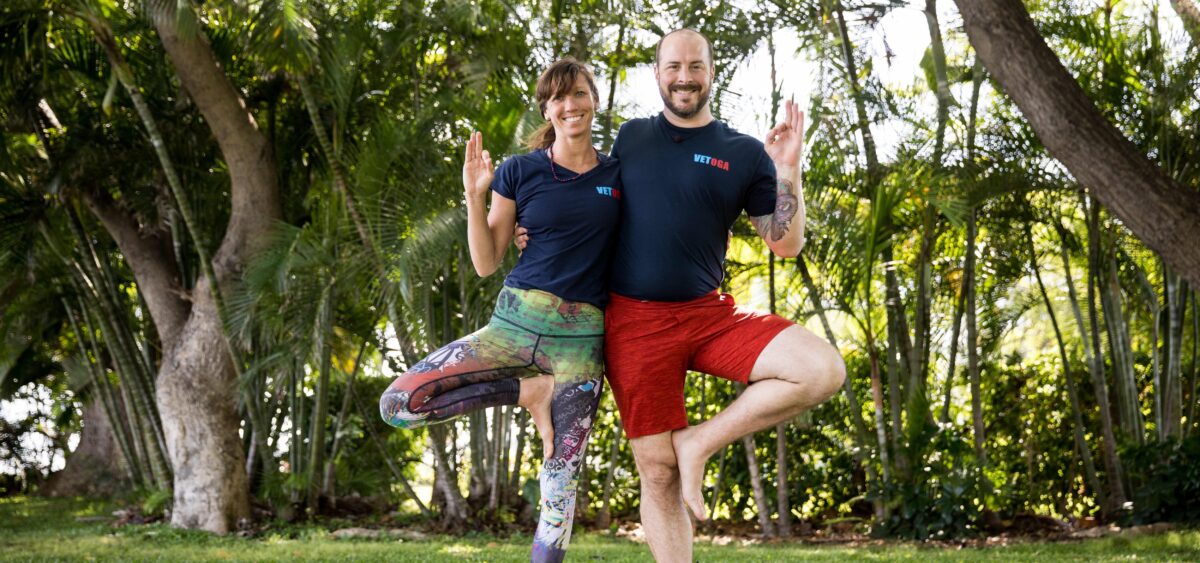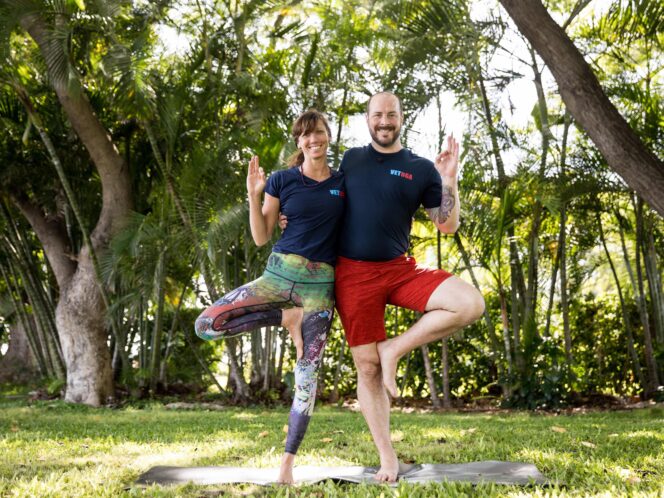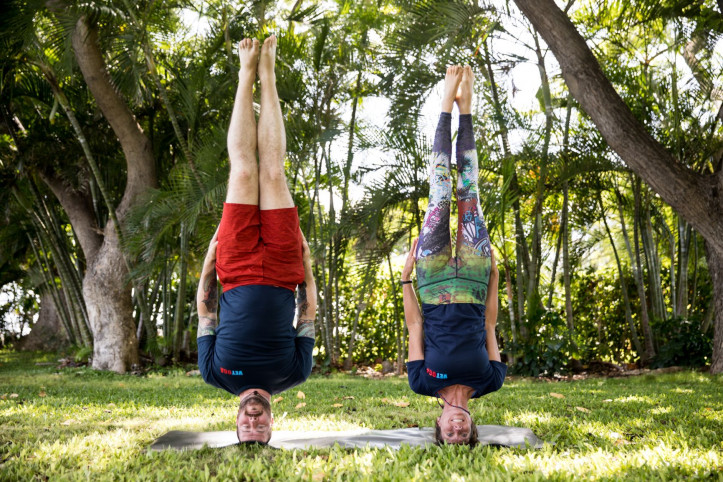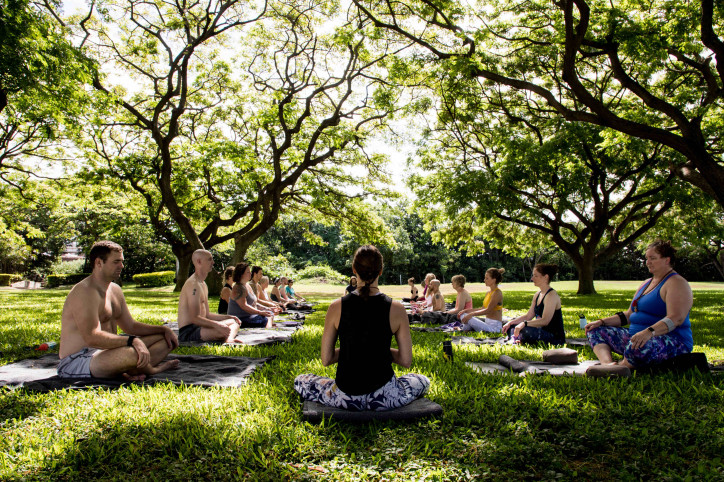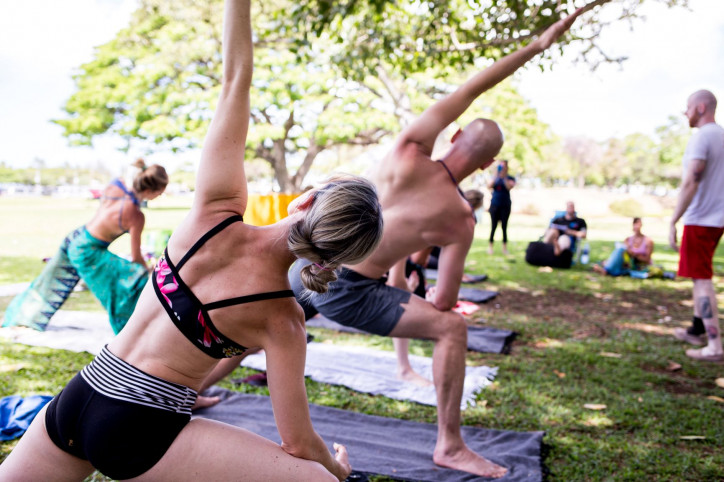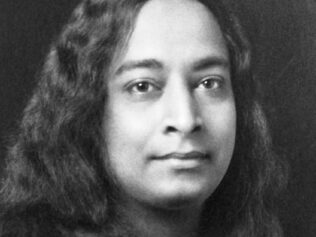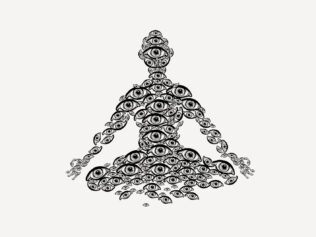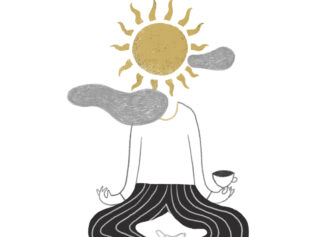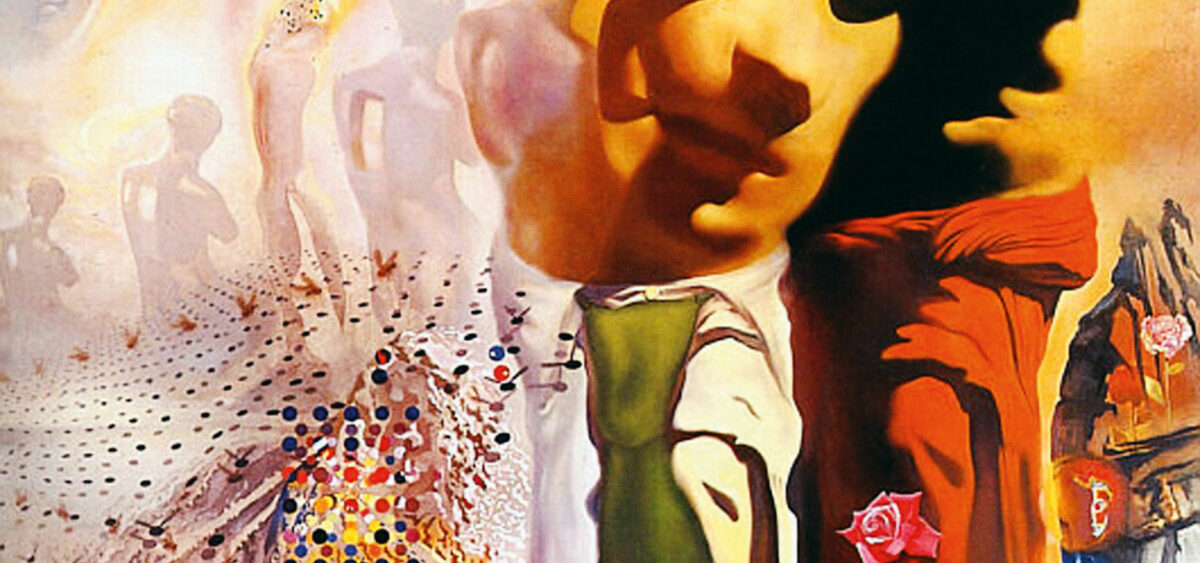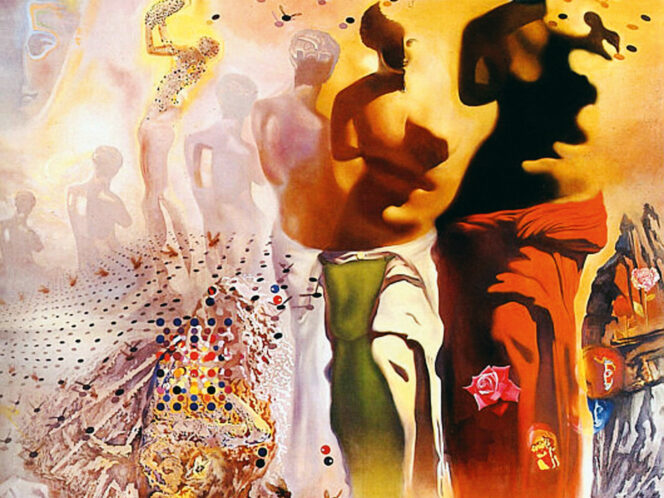
time 6 minutes
When Justin Blazejewski lay on his mat after his first yoga class he was soaked with sweat, but for the first time in years, he was peaceful. Jowita Kiwnik-Pargana tells the story of a soldier who learned how to heal trauma with yoga.
It’s a Friday night, 2008. Justin Blazejewski is a twenty-nine-year-old soldier and he’s about to go to his first-ever yoga class. He’s not too keen on it, to say the least, but he promised his flatmate he would come and now it’s too late to cancel.
If, just yesterday, someone had told Justin that he, a red-blooded marine, would try something like this, he wouldn’t have believed them.
“I was a tough guy; I served in the Marine Corps. I thought yoga was a girls’ sport,” he says. “My flatmate practically forced me into it.”
Two hours later, Justin knew there was no way he could ever give it up.
“The first class was a real challenge. By the end of the class, as I lay in corpse pose, I felt something I hadn’t felt before: peace and quiet—in my heart and in my mind. I was ‘hooked’ and started practising almost every day, five or six days a week, for months.”
Before You Pull the Trigger
Washington, D.C., July 2019. A young soldier has an emotional breakdown during a yoga class in the VEToga training centre. The man starts crying and confesses that, not long ago, he had just one dream: to put a gun to his head and pull the trigger. He didn’t think he could cope with depression any longer. The soldier says he decided to give VEToga a chance; one last thing to try before committing suicide, even though by this point he no longer believed anything could stop him from taking his life.
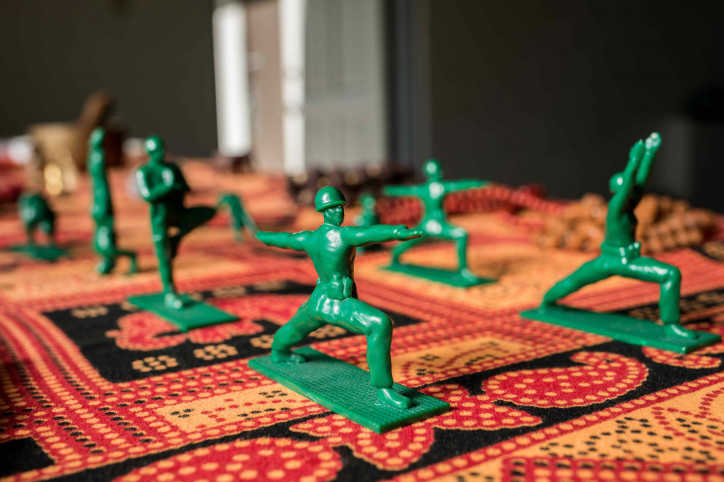
“Later, he told us it was during the classes with other veterans that he felt a sense of brotherhood and sisterhood that he’d been unable to find anywhere since leaving the military. At that moment, he realized he would never be alone again now he had this family of veterans to lean on when the darkness starts to creep in. He could always count on us,” says Justin Blazejewski.
Justin, now forty, is the founder of VEToga, a non-profit organization that offers yoga classes to veterans suffering from PTSD, as well as to their families. The organization also welcomes serving soldiers, non-profit activists who work in conflict zones, and civilians who go to army missions. Everyone affected by war is encouraged to participate in VEToga classes. The clue is in the name.
“I couldn’t help but notice your Polish surname,” I probe.
“Yes, a lot of my family originates from Poland and I am very proud of my roots. Unfortunately, I haven’t had the chance to look into my family tree, but I’d love to do it one day and find some Polish relatives.”
Blazejewski says that, nowadays, he considers himself a happy man. But it wasn’t always the case.
Two Months in Hell
In 2008, after coming back from Afghanistan, Blazejewski thought about death a lot. His own, that is.
Justin spent ten years at war. After four, he wanted to die.
“I started travelling to war-torn countries as a contractor in 2004, when I was twenty-five, after five years in the U.S. Marine Corps. In the next ten years, I went on over forty missions to the Middle East, mainly Iraq and Afghanistan, as well as several other countries,” says Blazejewski. He won’t reveal any details. “It’s confidential,” he explains.
“I would spend two or three months at a time in hell, away from my family and friends, in a foreign country where everyone looked at me with hate and anger in their eyes. I knew they wanted to kill me. Terrible things happened right in front of my eyes. I had several close calls: I was shot, hit by shrapnel, explosions going off all around us. When you’re always under pressure and surrounded by people who would love to see you dead, the stress becomes overwhelming.”
Journalist Maria Cuevas believes that Justin’s mind had to remain in constant fight-or-flight mode in order for him to survive.
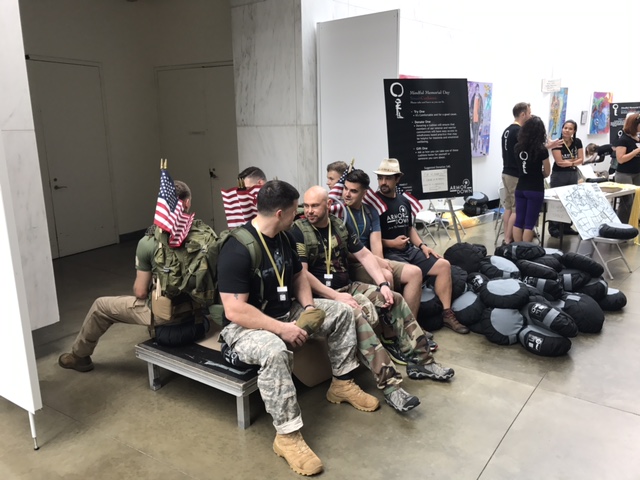
“When you’re in the middle of nowhere in Afghanistan, it’s the middle of the night, and mortars start coming in and exploding through the roof. People are shooting at you, attacking you, you can’t see who’s the good guy and who’s the bad guy. You are trained to keep running into danger when the bullets are flying at you,” recalled Justin in an interview for CNN.
Whenever back home on leave in Washington D.C., Blazejewski took to running to cope with the stress. He trained a lot, ran marathons. But it didn’t last long.
“I got wounded,” he explains. “After one explosion, I was knocked unconscious. When I woke up, my ankle was spiked with shrapnel. I could no longer run, and without that, I’d lost the only way I knew how to cope.”
Healing With Yoga
“War breaks people down, mentally and physically,” says Blazejewski.
When Justin came back to Washington with his damaged ankle, he contemplated suicide. He isolated himself from his friends and family (“I didn’t want to worry them,” he explains), and avoided leaving the house. “I wanted to be alone with my demons,” says Blazejewski.
Experts say that people who go through extremely traumatic experiences, such as war, are likely to suffer from post-traumatic stress disorder. They experience intense feelings of fear and helplessness; they are constantly haunted by disturbing memories; they cannot sleep and, when they do, they have nightmares. Colonel Charles W. Hogan, who is an expert on PTSD, estimates that this disorder affects 18 percent of Iraq War veterans and about 12 percent of veterans of the war in Afghanistan. Some people deal with it through psychotherapy, others turn to medication. Blazejewski chose yoga.


“How does it help?” I ask.
“Yoga teaches physical, psychological and spiritual techniques that help regulate stress and trauma. It affects the parasympathetic nervous system, calms the mind, allows the body to rest and self-regulate. It makes you more mindful of the present moment and reconnects you with your true self. Once you find spiritual balance, your body and mind can start healing,” explains Blazejewski.
I want to know if yoga helped Justin cope with his post-traumatic stress.
“Yoga practice and meditation gave me peace of mind. It taught me not to give in to stress and to control its levels. But I don’t like to call it PTSD,” he adds. “The ‘D’, for disorder, implies there is something wrong with the people who suffer from it. The term was created to help classify a certain type of mental disorder so it would make it easier to diagnose post-traumatic stress syndrome and prescribe medication or therapy. The way we fight trauma is by treating it like an injury. However, post-traumatic stress is a normal adaptive response of the body and mind to an abnormal event. This means that trauma survivors are incredibly adaptive human beings. We should not be defined by our traumas and disorders but by our ability to survive them, to grow and learn from them.”
It Just Makes Sense
In just four years since its establishment, VEToga has trained 100 yoga teachers in the US, four in Australia and one in New Zealand. During VEToga workshops, future teachers learn more than just yoga techniques. They are also taught how to talk to people suffering from post-war trauma, depression and post-traumatic stress. They are also taught how to run classes for handicapped veterans who have lost limbs and use prosthetics or wheelchairs.
Blazejewski’s plans for the organization are ambitious: “Our goal is to train 50-100 yoga teachers a year, and not just in the US, but in other countries too. Who knows, maybe we can encourage Polish vets to join us and learn some helpful techniques to take back home? Not many people understand the darkness veterans live in. We want to make their lives a little brighter.”
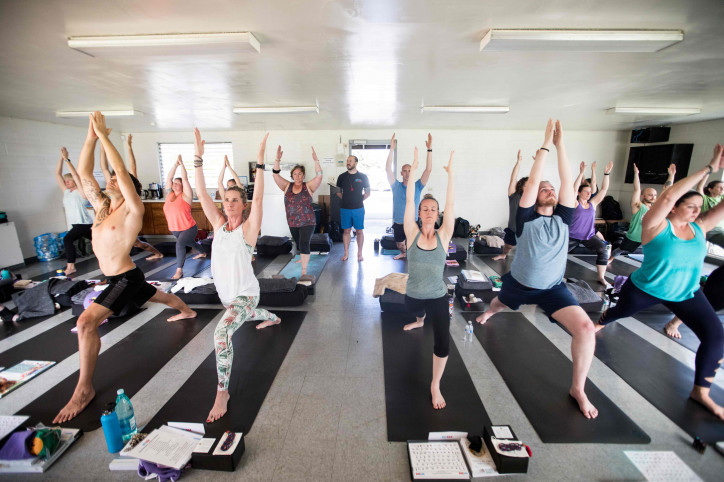
Over ten thousand American veterans and soldiers have taken up VEToga so far. Blazejewski hopes that in five years from now, his project will be available across the US.
“My life has changed for the better,” says Blazejewski. “And the more people I help, the better I feel with myself. When I look at them, listen to their stories and hear that yoga has saved their lives, I know my work makes sense.”
